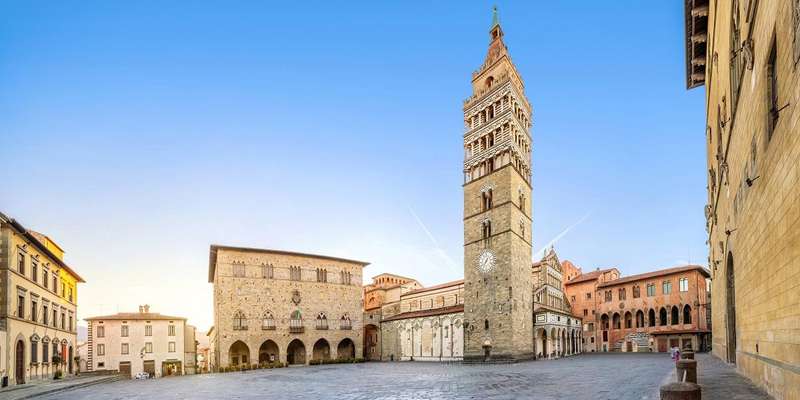- Home
- Useful Tips
- Pistoia's historic textile mills
Most travelers speeding through Tuscany miss Pistoia's living textile legacy, unaware they're passing within miles of workshops where Renaissance weaving techniques survive. Over 73% of visitors to the region prioritize crowded attractions like Florence's Duomo, leaving these intimate cultural experiences nearly empty. The frustration comes later – returning home with mass-produced souvenirs while authentic, family-run mills operate unseen. For culture seekers, this oversight means missing the chance to touch fabrics woven on 18th-century looms or learn stitching secrets passed down six generations. The deeper loss? Supporting vanishing artisanship as fast fashion threatens these micro-workshops. Unlike Florence's tourist-heavy leather shops, Pistoia's textile district offers rare access to creators who'll explain natural dye processes while you watch their shuttles fly.


Navigating Pistoia's scattered textile workshops without wasting half your day
Pistoia's authentic mills hide in plain sight, their unassuming facades blending into residential neighborhoods. Unlike centralized museums, these family workshops dot the city's periphery, requiring local knowledge to efficiently visit multiple sites. The key lies in understanding the district's historical layout – dyers clustered near the Brana stream for water access, while weavers occupied sunlit upper floors in the medieval center. Start at the Textile Museum (Museo del Tessuto) for context, then let their free map guide you to nearby ateliers. Wednesday mornings reveal the liveliest activity, when artisans traditionally receive new dye batches. Budget-conscious travelers should note: many workshops offer free viewing areas where you can observe loom work without booking pricey demonstrations. Just remember to move quietly – these are functioning studios, not staged attractions.
Hands-on experiences that won't break the bank – from thread spinning to natural dyes
While VIP textile tours can cost €150+, Pistoia preserves affordable ways to engage with this craft. The CERCAL association coordinates monthly 'open loom' days where visitors try basic weaving under master artisans' guidance for just €20. At Antico Telaio, children (and playful adults) can experiment with toy looms using scrap fabrics. For botanical enthusiasts, the Tolomei family hosts occasional dye garden tours showing how they grow woad for blue pigment and madder root for reds. Those preferring self-guided exploration should visit during September's 'Fabric Trail' event, when mills unveil special exhibits and offer sampler stitching kits. Remember: many workshops provide free take-home swatches – don't hesitate to ask politely. These tangible memories often prove more meaningful than expensive purchases.
Identifying authentic handmade textiles versus imported imitations
With counterfeit textiles flooding Italian markets, discerning genuine Pistoia craftsmanship requires sharp eyes. Authentic pieces will bear the 'Tessuto Artistico Pistoiese' seal, but more subtle clues exist. Examine stitching consistency – slight irregularities confirm handwork, while perfect uniformity suggests machines. Lift fabrics to check weight; local hemp and linen feel substantively heavier than mass-produced blends. True artisans willingly show their raw materials, like the distinctive 'Pistoia red' wool from local sheep breeds. For shoppers, the best guarantees come from workshops connected to the Historic Textile District Consortium, whose members maintain traditional methods. Be wary of 'limited edition' claims in stores lacking visible work areas – legitimate mills always have looms in operation. When in doubt, ask which specific artisan created the piece; impersonally sourced items rarely represent Pistoia's real heritage.
Staying near the textile quarter – balancing convenience with local charm
Choosing accommodation in Pistoia's San Pier Maggiore district places you steps from working mills while avoiding tourist crowds. Family-run guesthouses like Affittacamere Le Magnolie offer textile-themed rooms with framed vintage patterns and direct views of artisans' studios. For longer stays, consider an agriturismo on the city outskirts where you can witness sheep-to-shuttle processes; Fattoria di Celle provides weaving demonstrations using wool from their own flock. Budget travelers will appreciate the Ostello del Sole's textile history walking tours included in their affordable rates. Regardless of where you stay, morning visits to workshops prove most rewarding – that's when artisans typically stretch new warps onto looms, a mesmerizing process few tourists witness. Pro tip: many mills provide guest discounts if you show same-day lodging receipts from local establishments.
